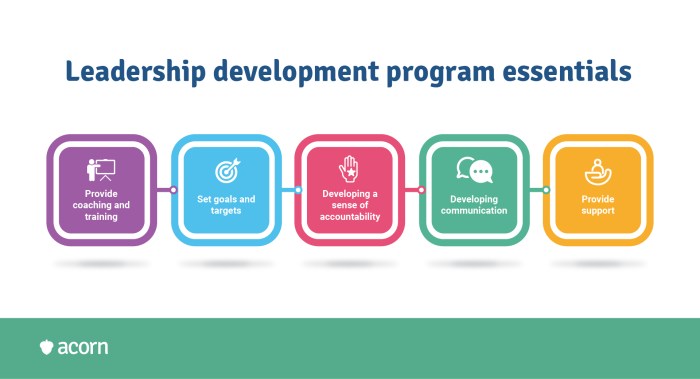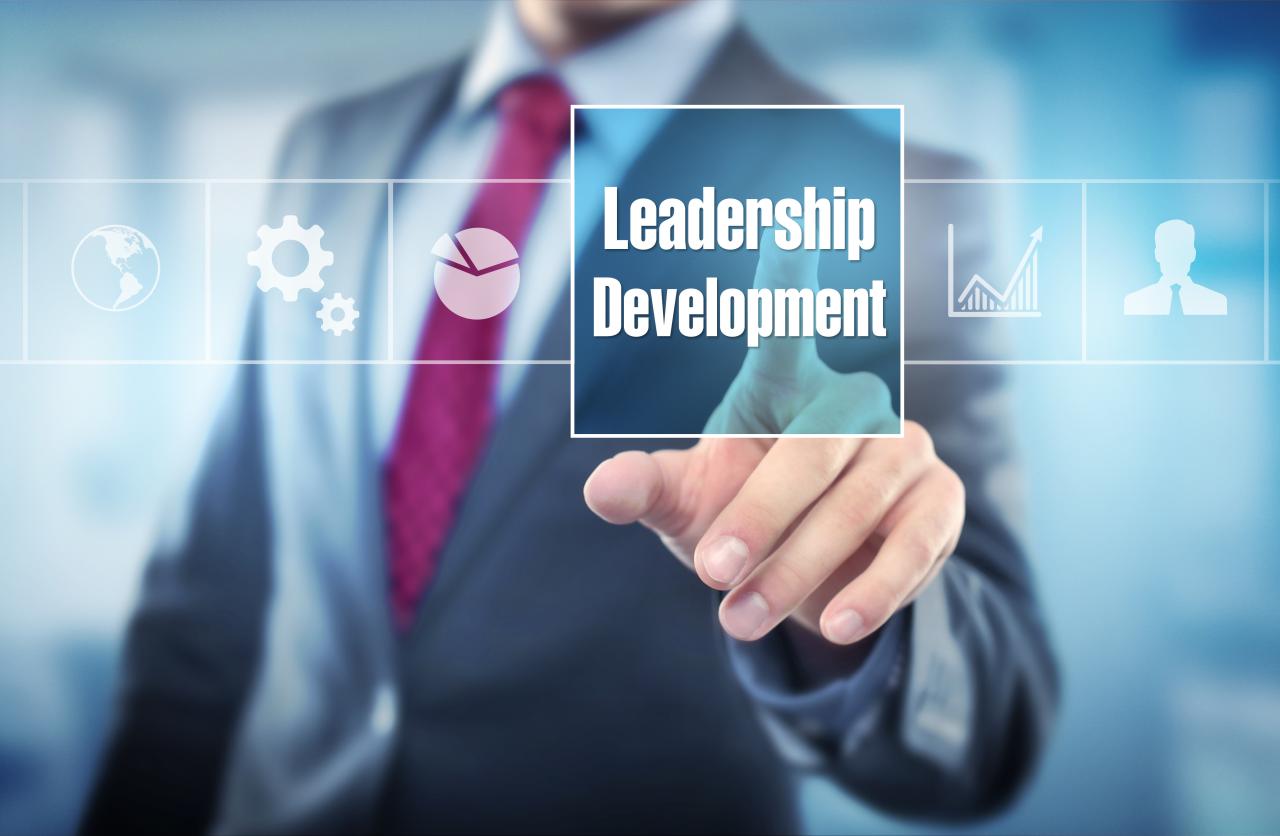Kicking off with Leadership Development, this topic is all about grooming the next generation of leaders with style and finesse. From unlocking potential to driving innovation, we dive into the essence of leadership growth.
Importance of Leadership Development

Leadership development is crucial for organizational success as it helps in nurturing and cultivating the skills and qualities needed for effective leadership. Developing strong leaders within a company can lead to increased employee engagement, improved decision-making, and a positive work culture.
Impact on Business Growth
- Effective leadership development programs can help identify and groom future leaders within the organization, ensuring continuity and sustainability.
- By investing in leadership development, companies can attract and retain top talent, leading to a more skilled and motivated workforce.
- Strong leadership can drive innovation and creativity, resulting in the development of new products or services that can drive business growth.
Role in Fostering Innovation and Driving Change
- Leadership development fosters a culture of continuous improvement and learning within a company, encouraging employees to think outside the box and come up with innovative solutions.
- Effective leaders can inspire and motivate their teams to embrace change and adapt to new market conditions, ensuring the company remains competitive and relevant.
- By developing leadership skills across all levels of the organization, companies can build a strong foundation for future growth and success.
Key Components of Leadership Development Programs

Leadership development programs are designed to cultivate and enhance the skills and qualities that make a great leader. These programs typically include a combination of training, mentorship, coaching, and assessments to help individuals reach their full potential in leadership roles.
Mentorship and Coaching
Mentorship and coaching play a crucial role in nurturing leadership skills. Mentors provide guidance, support, and wisdom based on their own experiences, helping individuals navigate challenges and develop their leadership style. Coaches, on the other hand, offer personalized feedback, skill-building exercises, and accountability to help individuals grow and improve their leadership abilities.
Leadership Assessments
Leadership assessments are essential in designing personalized development plans. These assessments help individuals understand their strengths, weaknesses, and areas for improvement. By identifying specific leadership competencies and behaviors through assessments, organizations can tailor development plans to address individual needs and goals effectively.
Strategies for Effective Leadership Development
Effective leadership development requires a combination of different strategies to identify and groom future leaders within an organization. These strategies focus on providing cross-functional training, feedback, and continuous learning opportunities to develop well-rounded leaders.
Identifying and Grooming Future Leaders
- Implement talent identification programs to identify high-potential employees early on.
- Create mentorship programs where experienced leaders can guide and groom emerging talent.
- Provide opportunities for employees to take on leadership roles in special projects or task forces.
Benefits of Cross-Functional Training
Cross-functional training exposes potential leaders to different areas of the organization, helping them develop a more comprehensive understanding of how the business operates. This type of training:
- Encourages collaboration and communication across departments.
- Promotes adaptability and problem-solving skills in diverse situations.
- Fosters empathy and understanding of different perspectives within the organization.
Role of Feedback and Continuous Learning
Feedback and continuous learning play a crucial role in leadership development by:
- Providing valuable insights for improvement and growth.
- Encouraging self-reflection and accountability in leaders.
- Promoting a culture of ongoing development and innovation within the organization.
Measuring the Impact of Leadership Development
When it comes to evaluating the effectiveness of leadership development programs, it is essential to have a structured approach that includes measuring key performance indicators (KPIs) and incorporating feedback mechanisms for continuous improvement.
Evaluating Leadership Development Programs
Assessing the impact of leadership development programs requires a combination of qualitative and quantitative measures. Key areas to focus on include:
- Employee Performance: Measure changes in individual and team performance before and after the program.
- Employee Engagement: Monitor levels of engagement and motivation among participants.
- Succession Planning: Evaluate the readiness of employees to take on leadership roles in the future.
- Retention Rates: Track the retention rates of employees who have undergone leadership development training.
Key Performance Indicators (KPIs), Leadership Development
Identifying specific KPIs can help organizations gauge the impact of their leadership development initiatives. Some common KPIs include:
- ROI (Return on Investment): Calculate the financial benefits gained compared to the costs of the program.
- Leadership Pipeline: Measure the number of employees progressing through leadership roles.
- Employee Satisfaction: Survey participants to assess their satisfaction with the program.
- Leadership Effectiveness: Use 360-degree feedback to evaluate leadership skills and behaviors.
Importance of Feedback Mechanisms
Feedback mechanisms play a crucial role in refining and optimizing leadership development strategies by providing insights into what works and what needs improvement. Organizations can gather feedback through surveys, focus groups, and one-on-one discussions to tailor programs to meet the evolving needs of participants.






